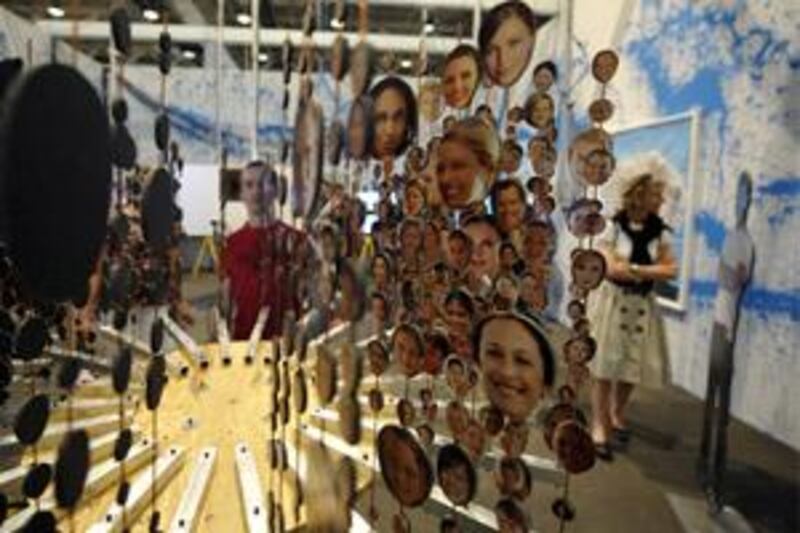It is now 40 years since the top dogs of the art world started gathering in Basel on the banks of the Rhine where Switzerland, France and Germany meet to trade tips and treasures. With a population of around 160,000 that swells by 60,000 for Art Basel, the usually staid Swiss town takes on a decidedly edgier flavour once the containers from around 300 of the world's top galleries start rolling in.
As the world's largest and most prestigious contemporary art fair opens today, the big names from London, Paris, New York, Johannesburg and Buenos Aires have set up temporary shop and are exhibiting works by more than 2,500 artists from the 20th and 21st centuries. Established and emerging artists will be represented in forms ranging from painting and sculpture to installations and video. On the buyers' side, it is people-spotting heaven. Last year's big spenders included Roman Abramovich and Brad Pitt as well as a flood of new collectors from Russia and the Middle East.
The fair has even spawned a younger, sunnier sister. Art Basel Miami Beach, held in December, now calls itself the "most important show in the United States". Counting all the fringe and extraneous activity, it has reportedly now eclipsed its forebear in size. But the question on everybody's lips today will be whether collectors will still be reaching for their wallets this year. "Our expectations are really optimistic," said Maike Cruse, the communications manager for Art Basel. "We know about many people coming. Hotels are totally booked out in Basel and the galleries have brought the highest quality works."
In fact, applications from galleries wanting to participate in the fair this year reached record numbers, according to Cruse - although of the 1,100 entries, only 300 were chosen by the Art Basel committee, an international jury of renowned gallerists. So from the fair's side, things are looking up. But what about the galleries? "Things that have established themselves and work that is very exceptional are continuing to hold interest," says Maureen Paley, whose eponymous London gallery shows works by the Turner Prize-winning artists Wolfgang Tillmans and Gillian Wearing, and who has been exhibiting at Art Basel since the mid-1990s. "It has surprised the critics that people are still interested in really high quality work."
This preference is, it seems, reflected in the types or work galleries are bringing to the fair. "We've brought slightly more expensive things than we normally do on the basis that people are investing in good things at the moment," says Madeleine Bessborough, director of the New Art Centre in Wiltshire, England. The centre has been coming to Art Basel since 1973, and shows pieces by Barbara Hepworth, Anthony Gormley and Richard Long.
The fair's consistent high quality makes it a magnet for the industry's elite, says Bessborough, regardless of the economic climate. "Art Basel always comes top in terms of sales and contacts, and it brings the most interested collectors and museums. Everybody tries to bring the best. A few stands down from here there's the most wonderful Moore plaster which you just wouldn't see in a million years - which you can buy."
Paley feels the fair's seriousness is part of what makes it impervious to financial slowdown. "People have brought exquisite things," she says. "The installations are looking very considered and the quality this year is in no way affected by anything." Regardless of sales, from a gallerist's point of view, Art Basel is still essential in order to keep abreast of industry trends. "I always find that when I'm in Basel, I learn things," says Paley. "And it helps to keep me well-informed. This fair has never failed to surprise and interest me, and I don't think this year will be any different."
Collectors may be a fickle bunch, but when it comes to quality, the recession, it seems, is unable to make itself felt here. "It's always difficult to predict," says Paley, "but I do think it's very important in times like these to see that quality wins out. And that's an essential part of what we're doing because I don't think any of us are involved only for the good times. We're also involved because we believe in what we're doing."
Art Basel starts today and runs until Sunday. For more information go to www.artbasel.com.





